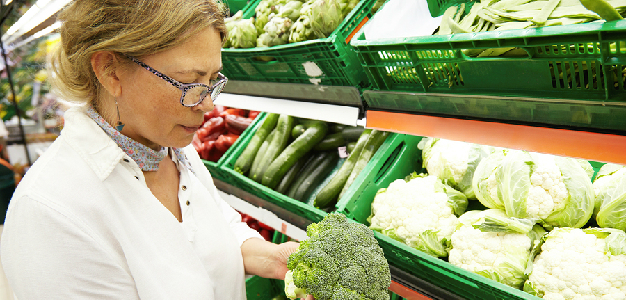A New Zealand study has linked fibre with a lower incidence of diseases such as heart disease, stroke, type 2 diabetes and bowel cancer. But when the study leader says this means we should think twice about low-carb diets, I think he’s barking up the wrong tree.
This study got a lot of media coverage, and if you read or heard the interviews, you’d have been left thinking that low-carb equals low-fibre, and that cutting back on carbs is a seriously bad idea.
It’s not. It’s entirely possible to ease back on sweet and starchy foods and still eat plenty of fibre.
What’s more, most of us who are over 50 and trying to manage our weight and our health would be wise to look at doing just that.
The NZ research team analysed 40 years of nutrition studies and found an association between fibre intake and health.
They concluded that the minimum daily intake of fibre should be 25-29g, and that 30g is even better.
The tricky part of research that shows an association is the way we interpret it. Is it fibre that makes us healthier? Or do healthier people eat more fibre?
Eating more fibre doesn’t happen by accident. The people who do that tend to be more educated, more affluent, more moderate drinkers, more likely to exercise, and less likely to smoke or be obese.
So the real finding here could be that it’s a whole way of life that reduces our likelihood of chronic disease, not just fibre.
But let’s stick with the fibre and my point that you don’t need lots of carbs to get it.
Unfortunately, if you look at most websites that list fibre-rich foods you could be forgiven for thinking that you need to eat bran cereal and banana for breakfast, plus plenty of bread, spaghetti, dried fruit, potato and baked beans, i.e. lots of carbs.
And while you’d be healthier than the folk living on takeaways, doughnuts, chips, biscuits, lollies, ice cream and soft drink, there’s another way.
Making vegetables — especially the non-starchy ones — a mainstay of our diet helps both our health and our weight. Luckily there are plenty of these, e.g. green beans, mushrooms, zucchini, broccoli, cauliflower, asparagus, and leafy greens (Asian greens, spinach, and so on).
Of course that doesn’t mean not eating carrots, egg plant, parsnip or sweet potato. It just means prioritising the lower-carb list. Look for these when you do your weekly shop and build your meals around them as much as you can.
Gone are the days when vegies were bland, boiled things. There are so many terrific recipes for them now. Ottolenghi’s latest book Simple is a recent example.
I haven’t even mentioned herbs, but some of Ottolenghi’s recipes show how standbys like parsley and mint can transform the taste of a meal.
If you’re a mashed potato fan, try mashing cauliflower instead for fewer carbs and healthier blood sugar. Or whizz it up in the food processor and steam it as an alternative to rice.
Look for great salad recipes too. Make interesting salads your go-to lunch, and if you focus on leafy greens plus fresh raw vegies, or even cooked leftover ones, you’ll nail the low-carb-with-plenty-of-fibre idea.
I don’t think we need to get into counting grams of fibre; we just need to eat real food. But as a guide, a cup of broccoli contains 5g. Half an avocado contains 7g. If you focus on vegies plus some healthy protein and good fats, you’ll have no trouble eating enough fibre.
When it comes to fruit, lean towards the ones that are lower in sugar, such as berries (rather than banana which has more sugar than fibre).
And look for ways to include nuts and seeds in your diet. Walnuts and flaxseeds are high in fibre, for example.
But be circumspect about grain. Yes, as long as it’s not too refined it contains fibre, and our national dietary guidelines treat it like a hero, but we eat so much of it.
If you have oats for breakfast, don’t also load up on bread and crackers and pasta and rice. Unless you’re an athlete or a mountain climber.
The Canadian nutrition company Precision Nutrition promotes swapping our grains for greens, and that’s a smart move.
I’m not talking about ketosis or extreme low-carb eating here, just about easing back on the high-carb foods and including more of the lower-carb options.
That kind of tweaking gives us all the fibre we need while doing our health and our weight a favour.

